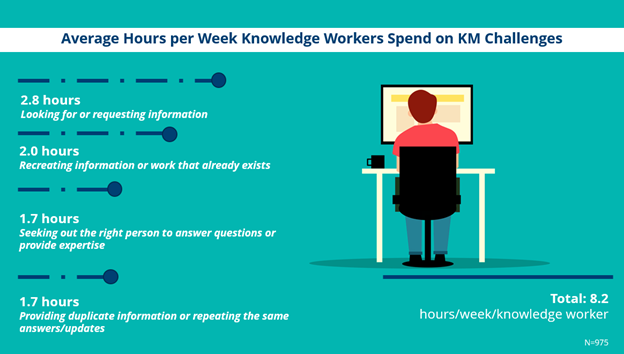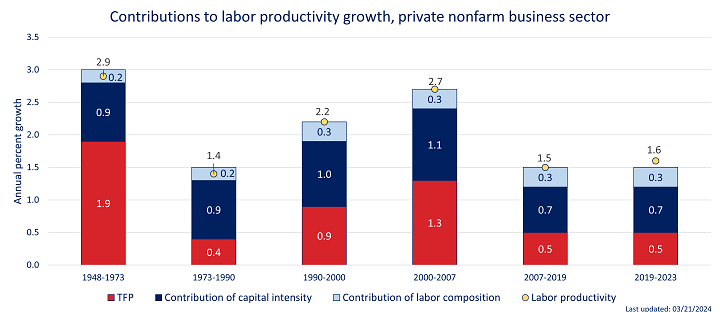GenAI is a Productivity Revolution

Get the latest in your inbox

Get the latest in your inbox
TLDR—We’re at the beginning of a productivity revolution, not a sci-fi movie. TEI is better than AGI and it’s easier to build and less disruptive, too. Stardog Voicebox ROI comes from eliminating a significant part of the tedium of knowledge work—the “dead time” that makes it a PITA—by fully democratizing access to insight.
Internally we care about two metrics for AI ($KTPS and F1, which I’ll explain another time), but there’s another metric or family of metrics that we care about even more, except that they belong to our customers, not to us, and our job is to nail them on the customer’s behalf. In short, our good friend ROI.
That’s what we care about and it’s why the Stardog Voicebox vision is that anyone can ask any question about any data and get an accurate, timely, hallucination-free answer immediately.
The GenAI era isn’t a science fiction movie, neither utopian nor dystopian. GenAI is a productivity revolution.
What is the argument for how GenAI’s real impact is ROI or a productivity revolution? By eliminating dead time, which knowledge workers spend about one day a week on, we can free them to work on stuff that creates more value for their org. That has the effect of increasing headcount by 20% at zero additional expense. That’s a productivity revolution! But there’s other benefits too including esprit de corps, individual flourishing, and increasing the odds of unlocking non-linear value creation.

Given that “knowledge worker” is defined as non-routine cognitive work, the 20% they spend on work that can be automated is dead time. 8.2 hours per week are spent on essentially bullshit tasks that can be automated away with the right tech.

Source: APQC
Look carefully at the categories of dead time waste:
To give you some idea of the magnitude of the ROI at stake here, consider historic productivity contributions—by labor and capital—in the 20th century in nonfarm business sector, which is larger than just knowledge workers but contains them.

Source: BLS
If you’re following along at home, here’s my argument in full:
TEI > AGI since ROI > sci-fi.
That’s it, that’s the argument. I’ll explain it below, don’t worry. TEI is more valuable than AGI because productivity revolutions are better than science fiction.
Focusing on productivity has a cost. Focus is about saying no. So what do we say no to? Well, to AGI, frankly. Sam Altman infamously said recently—
Whether we burn $500 million a year or $5 billion—or $50 billion a year—I don’t care, I genuinely don’t … As long as we can figure out a way to pay the bills, we’re making AGI. It’s going to be expensive.
I wonder what the CIOs and CFOs of OpenAI’s customers think about being grist for his mill. That aside, I could not be less aligned with Sam Altman on this point. I profoundly don’t care about AGI; in fact, I tend toward opposition to AGI. But I’m very enthusiastic about AI. What explains this variance?
Stardog says no to AGI in order to achieve ROI for our customers in the near term.
So what the hell is TEI?
Task-emulated Intelligence (TEI) is the use of AI to emulate human intelligence in task-dependent, context-relative situations where ROI is derived from automating some or all of key jobs-to-be-done, freeing people to perform higher-value tasks.
LLMs don’t reason, think, feel, emote, express agency, intend, value, wish, desire, hope, or want; they can, however, convincingly emulate all of these modes of human intelligence, especially when context is restricted to a specific task.
Not only can we exploit this difference to sidestep lots of tedious pseudo-philosophy debates (win!) but it’s also the key to understanding how to create value with LLM.
Basically, TEI comes down to the algorithmic production of output (words, speech, pictures, etc) sufficient to emulate people doing specific tasks and, thus, to accomplish work. The GenAI key is given in the idea that GenAI is a machine for always knowing what to say next.
TEI is better than AGI because it’s easier to achieve technically; hence, closer to producing ROI. It’s less destructive to existing social relations (although not entirely undisruptive of them); and, it’s less worrisome with respect to downside existential risk. (I don’t give that risk much weight, but less chance of existential threat is always good.)
TEI is preferable to AGI in every way that I can think of except that Big Tech is obsessed with building AGI and doesn’t invest as much in TEI.
LLMs emulate reasoning, thinking, feeling, emotion, agency. That’s enough! TEI is uncanny enough. It’s capitalist enough and it’s revolutionary enough.
AGI is too much in every way.
With a machine that lets anyone answer their questions quickly and easily, we can eliminate a great deal, maybe even most, of the dead time that plagues knowledge workers and drains their productivity. That’s just straight microeconomics and how the 20th century became the wealthiest in human history.
But there’s another value to win, too. This value is more like a macro-vision, harder to quantify, and potentially non-linear. It’s predicated on a simple claim: the only source of value in the universe is human creativity.
What I believe in more than even my own creativity, skill, precision and commitment—and that’s saying a lot—is everyone else’s in aggregate! What I believe in is empowering people with unmediated access to reality (i.e., what nerds call “democratized access to data”) and then getting the hell out of their way and watching them literally create the future before our very eyes.
The entire point of Stardog is to kill the dead time and free people to do amazing things with hard work, grit, cooperation with their fellows, and that near-divine spark of “wait, what if…” that distinguishes us, if anything truly does, from all the other animals we share this planet with.
How to Overcome a Major Enterprise Liability and Unleash Massive Potential
Download for free